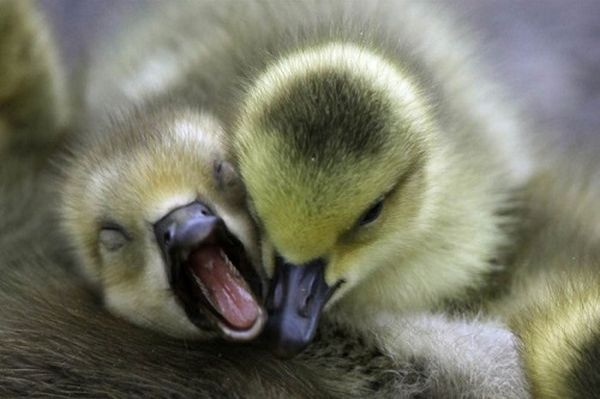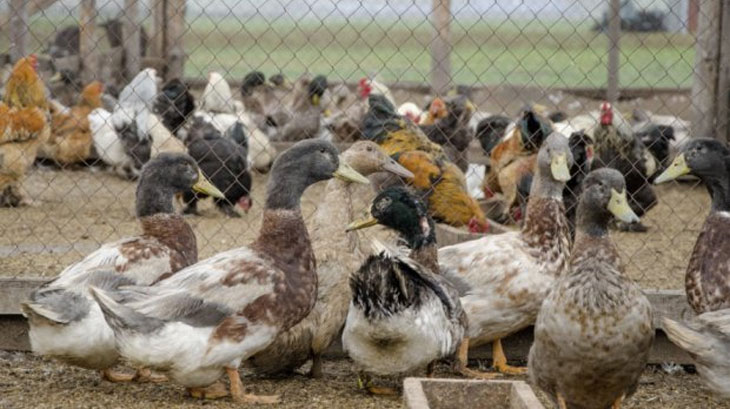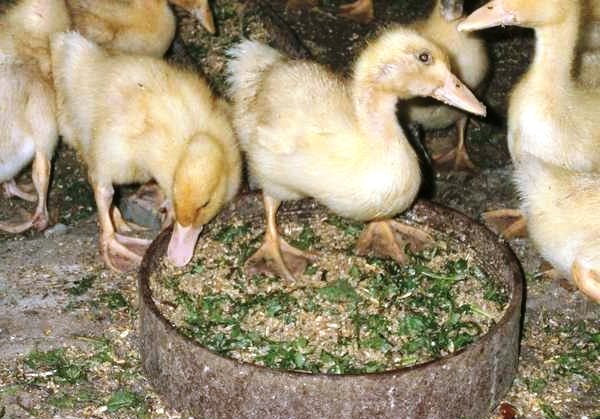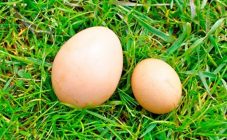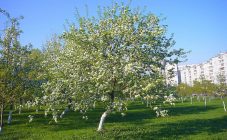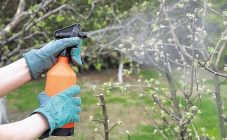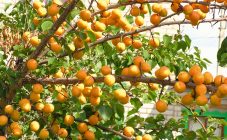Content:
Poultry farmers often notice that ducks occasionally try to pluck the feathers of their fellows. Especially such actions can be seen for adults. Experienced poultry farmers and experts explain this by the fact that waterfowl lacks certain nutrients. As a result, in order to make up for their lack in their bodies, ducks tend to pull the plumage of their fellows in order to get the necessary vitamins and proteins.
Why ducklings pluck each other's feathers, what to do
Some poultry farmers add fresh vegetables to their bran and feed to solve this problem. The bird owners believe that in this way the pets will compensate for the nutritional deficiency and the birds will stop pecking at each other. However, experts do not think so and highly do not recommend solving the problem that way. The explanation is that fresh vegetables negatively affect the body of waterfowl by acting as a laxative. In addition, due to frequent bowel movements, a large number of important trace elements and salts are removed from the bird's body.
Why do mulard ducks pinch each other's feathers? This is most often seen in the birds of this hybrid, which tear the fluff out due to a lack of protein and some vitamins.
It should also be remembered that birds will peck even when poultry farmers take poor care of their birds. The barn must have a ventilation system that provides the pets with clean and fresh air. Also, there should be enough feeders and drinkers in the barn.
Experienced farmers advise not to run the problem, but to immediately take the necessary measures to help solve it. Plucked ducks will not only look untidy, but can also contract dangerous diseases. Also, if there are no good feathers on the wings and tails, then the birds can injure each other. The opened wound begins to peck at the ducks even more, which leads first to a large loss of blood, and then to death.
Some poultry farmers wonder why ducklings pluck their feathers. This phenomenon is especially dangerous, since it is at the age of 2 months that the feather cover begins to form in ducklings.
How can you solve the problem quickly?
Experienced poultry farmers provide many tips to help you stop and stop pinching.
- The poultry farmer needs to pay close attention to his birds, watch them from time to time. This will identify the most aggressive ducks, which are the main instigators of unrest in the barn. They must be isolated for some time from the rest of the ducks.
- Fights between ducks are often caused by excessively bright light in the barn. Solving this problem is also simple, just unscrew the bulbs in the barn and replace them with dim ones. This method will also affect the ducks so they stop pinching.
- Another reason for barn fights is the laxative effect of fresh vegetables, especially musk gourds, squash, squash. To exclude this option, it is enough to remove them from the diet of birds or give them as rarely as possible.
- Ducks must have good access to food and water. That is why birds should be placed in small groups in the barn. In this case, they will no longer arrange bird fights for food and drink.
- It is imperative to provide pets with clean air and solve the problem with room ventilation. Also, the shed needs to be systematically ventilated, this will relieve it of dampness and dryness. The latter leads to the fact that the feather begins to deteriorate, as a result, the ducks have a desire to pull it out.
Duck conflicts due to small space
In some cases, conflicts between birds arise not only due to the insufficient amount of nutrients in the bird's body, but also due to crowding. Some poultry breeders seek to settle even in a small room a huge number of young ducklings or already adult ducks. This is not recommended. If there is not enough space for pets, they will begin to experience discomfort in the barn and fight each other for territory. It is important to observe the golden mean and to settle a certain number of birds in the barn, so that each duckling has enough space, has access to water and food.
If the barn has an area of 5 m in length and 2.5-3 m in width, then 15 to 20 ducks can be settled in it, but not more. If the room for their maintenance is smaller, then the rate should accordingly be reduced, and if the room is larger, then the number can be increased. At the same time, some experts say that you can deviate a little from the norm by settling 2-3 more birds in the barn, but in this case you should not abuse it a lot.
Fewer birds will be better supplied with water and feed, which will help solve the problem of pulling out feather cover, and drakes will grow faster and gain the necessary weight.
Nutrition adjustment: what to exclude and what to add
And yet, special attention should be paid to the nutrition of waterfowl pets. After all, it depends on its composition how quickly the ducks will grow and gain good weight.
Experienced poultry farmers advise changing the daily diet for pets from time to time. It is recommended to always add arginine, methionine, cystine, sulfur and calcium to the feed. Moreover, it is sulfur that must be present in the feed of little ducklings.
In addition, it is recommended to use a feed that contains a sufficient amount of copper and manganese sulfates, sodium selenite, iron, cobalt chloride, citric acid and biovetin.
Experts also advise how often to feed the birds with fish, and it's good if it is fresh. In this case, sprat or capelin will do. These are small fish that ducks can eat easily and without problems. Such dressings need to be done quite often - 3 times a week. In this case, each duck should be given 3 pieces at once. It is advisable not to change this rate either in the smaller or in the larger direction. Overfeeding fish can lead to bad consequences.
From time to time, little ducklings can be given meat and bone meal, which contains a large amount of micronutrients. Top dressing with sunflower, flax or soybean cake will be good.
Milk waste should not be thrown away. They will also have a good effect on the growth and weight gain of ducks.At the same time, you can feed the bird not only with milk waste, but also make milk yourself from a special dry powder. Duck's diet can include herbal flour, as well as fresh herbs (dill, onion, parsley, celery, basil). It should be noted that half of the grain-flour feed can be completely excluded from the poultry diet. You can replace it with a conventional nutrient mixture, which any poultry farmer can make on their own. To do this, it will be enough to mix an equal amount of bread, potatoes and herbs. As the latter, you can leave from cabbage, nettle, dandelion and beet tops. Crushed chalk can also be added to the diet. The amount of salt should also be monitored; it can be increased daily by 1.5-2%.
Experts also advise to constantly drive a bird to the pond. However, this, of course, will only work for those who have a pond or river nearby. There ducks will not only swim and rest, which is good for them, but also fish, shells and duckweed.
How to trim the beak of mulardam ducks
You should be on your guard if young ducklings began to pluck each other's feathers. The problem is that at such a small age, they only have the appearance of a feather cover and in no case can they remain without it. Of course, ducklings-instigators of fights should be immediately removed from the bulk. They can also partially remove the beak. This procedure should be done only from the age of 3 weeks of ducklings or Indo-ducklings. The beak will completely heal in 3 weeks.
This procedure has proven itself, since ducks with trimmed beaks no longer show violent aggression and do not pull out feathers from their fellows. The procedure is carried out using ordinary small scissors, the cut site must be treated with iodine.
If you take into account all the advice and recommendations above, then the breeder's ducks will live in harmony with each other, without harming their relatives!
